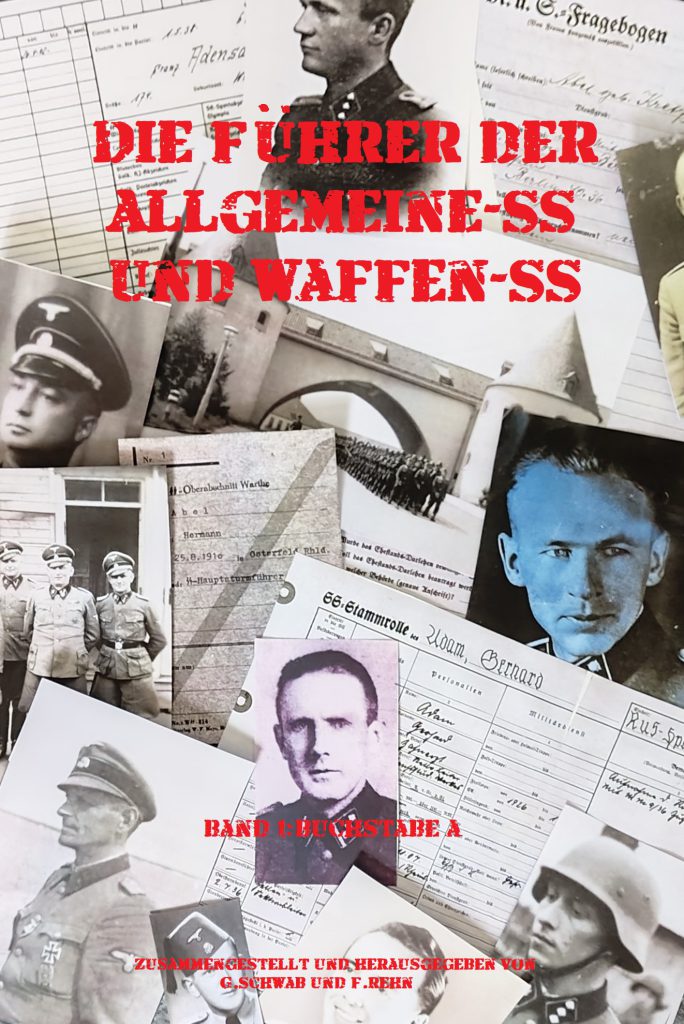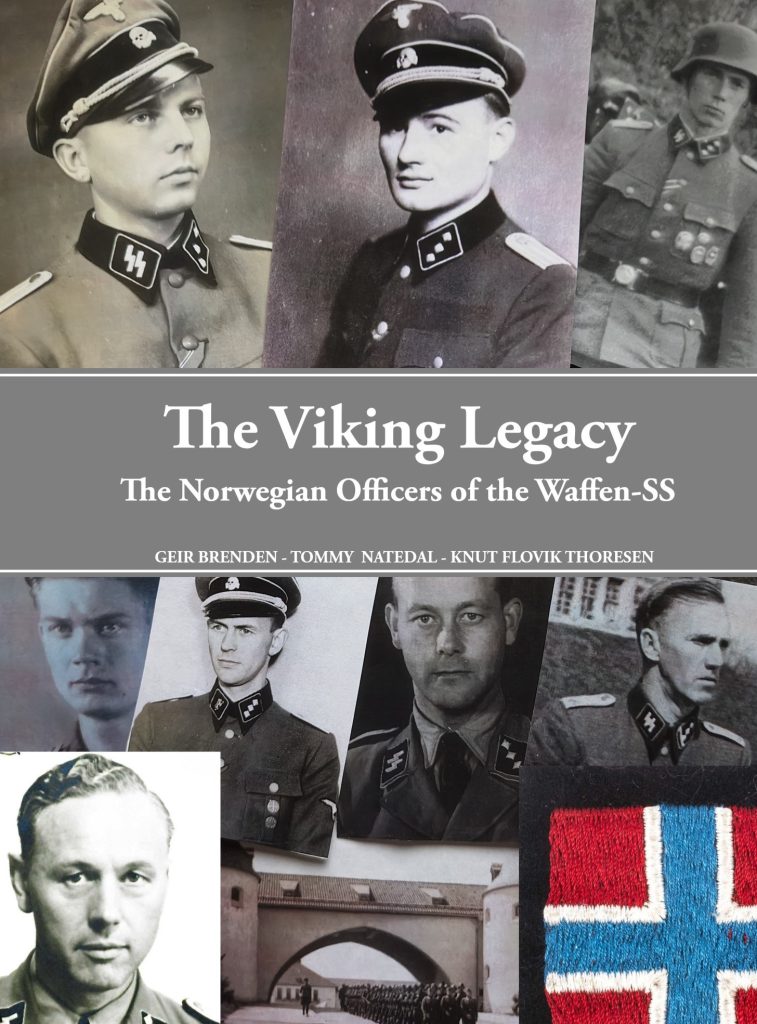“Eiserne Kreuz” a new digital magazine
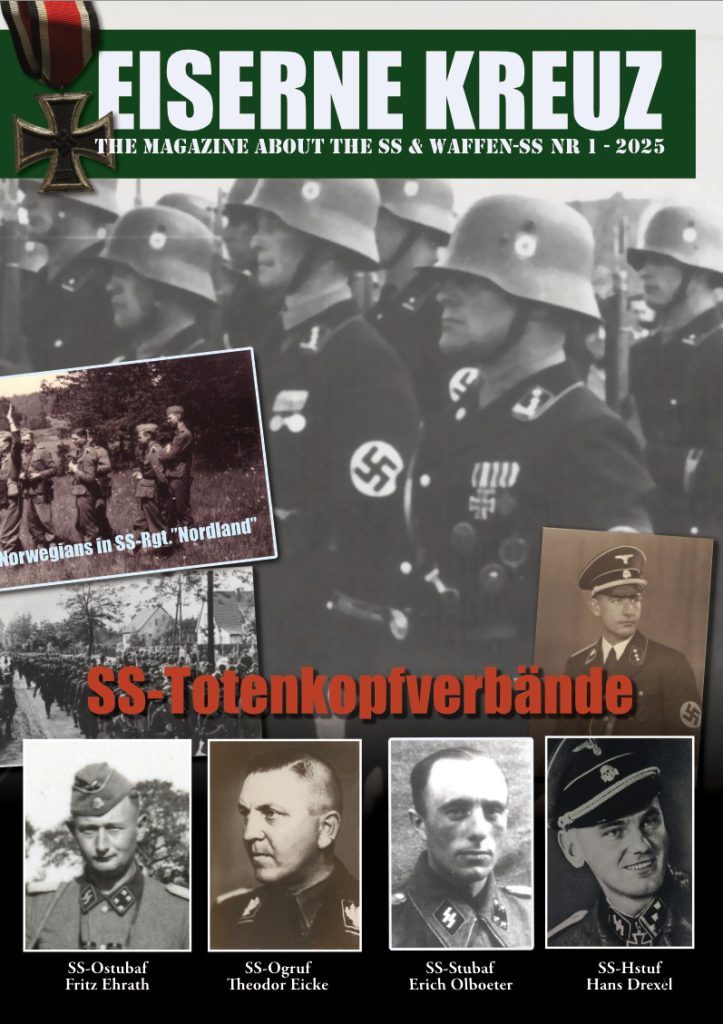
Since some time I have with the help from a friend started to creat a digital magazine which will deal with all kind of acpects about the SS and Waffen-SS. We also have great contributors of writers who have shared most interesting stories from their own archive. 62 pages in total.
The first issue will be free to download from the internet, but the upcoming issues will only be sent through emails to those who sign up to get it. Its free and won´t cost you a dime. To sign up you just send me an email on info(a)axishistory.com, please write “Eiserne Kreuz” in the subject line.
In the first issue we deal with the SS-Totenkopfverbände (1936-1940), several different RK holders of the Waffen-SS, many with totally new photos and never to be seen before. We also share som trivial info regarding the SS/Waffen-SS.
We have taken the artistic liberty of naming the magazine “Eiserne Kreuz”, if we were to follow all the language rules it would actually be called “Das Eiserne Kreuz”, but just like many other newspapers they have removed “the” or “Der, Die or Das”.
We should also point out that we (so far) behind the magazine do NOT have English as our native language, even though we have had the magazine proof read by an Englishman, there may still be some grammatical errors etc. I hope you understand this.
I hope you will enjoy this magazine, and as we don´t have scedual when they will be published I can´t say when Issue Nr 2 is out, we are currently working on it. We are also working on Nr 3.
Temporarly removed! Eiserne Kreuz Nr 1
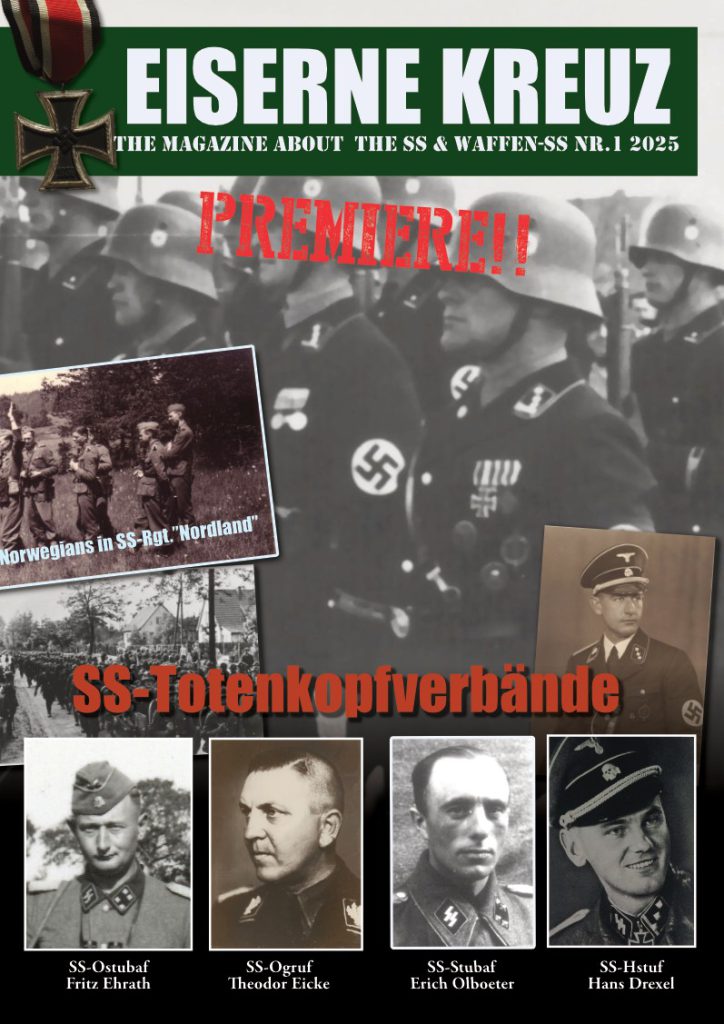
Unfortuantely we found some errors in the magazine so it´s temporarly removed, but it will be up and running in a short while.
The new Digital magazine about the SS and Waffen-SS , free to download here.
Any questions, suggestions etc. Send me an email, you find the adress within the magazine.
Enjoy!
//Georg
Was it a Warcrime or not?
A discussion I had with a person on Facebook forced me to write this article. The discussion we had was an alleged massacre that was allegedly carried out by the SS-Regemente “Deutschland” in April 1941. The reason I write alleged is for several reasons. I will now demonstrate here why this article is incorrect and that I believe that the alleged research the author is said to have carried out is very flawed.
He writes in the article that he will now identify the people who are supposed to have carried out the alleged massacre. However, my research shows that he has missed several essential pieces and people who would later be of interest. He also writes that he has researched this matter for five years, despite this, he has not retrieved the documents that are found in the former office for the Investigation of Crimes Committed by National Socialism in Ludwigsburg. After about 45 minutes after we received these three folders from the Bundesarchiv, we immediately saw that his story does not hold up. Which is perhaps why it only circulates on ONE page of all on the Internet and the person’s own Facebook page, from which I am are banned after I started questioning the alleged massacre.
But BEFORE I start going into details, I still want to EMPHASIZE that of course the Waffen-SS committed war crimes, and also crimes against humanity, but I still believe that it is IMPORTANT that we reproduce these crimes in an adequate and correct way, because if not, this is how future researchers will be just as quick as I was to get the contradictory information and be able to point to this falsification and say “look they are lying about this, what else are they lying about?”. Enough about this, let’s get into the details!
The author claims that over 200 people were massacred in Alibunar on April 12, 1941, the Yugoslav authorities found out that there were 96 victims in total, where the author got the 200 victims from is unknown to us, he claims that there is a “Commission for the Investigation of the Crimes of the Occupiers”, is this commission supposed to work through the prosecutor in Yugoslavia? He offered to show the list, but we already have the list from the Yugoslav prosecutor, which today is preserved in the Bundesarchiv, among other things. I know that much of his so-called research leans towards the information of a Serbian researcher, I take these with a pinch of salt as they clearly show the same ignorance that the author has shown.

A point that has been VERY important and that is WHY a number of people were executed in Alibunar in April 1944, because it was done, no doubt about it, SS-Rgt. Deutschland has even noted it in his war diary from this day (April 11). The reason is very simple, the majority of those who fought against the German troops in Alibunar in April 1941 were so-called “Freischärler” which is the German term for partisans, or people who in civilian clothes take up the fight against armed troops. According to the Haug Convention (from 1907, it was changed again in 1949 and 1961) people who take up arms against a warring party in civilian clothes have no protection, they are completely at the mercy of the enemy and they were fully entitled to execute them. As I emphasized to the author several times – Morally wrong but legally correct! The author could have quickly found this information if he had used Google. I also tested this thesis on a couple of people I know, one of whom is a former police officer and the other works as a prosecutor, a neighbor of my old mother. Both said in unison – The matter is clear, Partisans, nothing to think about.
Furthermore, we can read in his story that what triggered the battle itself was a young man who shot SS-Rgt. “Deutschland” adjutant SS-Hstuf Paul Rohde, this young man was a civilian and shot Rohde in the chest after he stepped into a tavern. Although the Serbian researcher claims that the German troops fell in rows in the battle against the Yugoslavs. The only victim noted for SS-Rgt- “Deutschland” is precisely SS-Hstuf Rohde. When we search the Volksbund, we also do not get any other victims. Which is Point number 2 where I noticed that their story is not up to par.
The author points out SS-Rgt. “Deutschland” as the unit that is supposed to have carried out all the “crimes”, we look in the War Diary of the SS-Div. “Reich” for this day and we find the following units that are supposed to have been at Alibunar on April 11, 1941 – Divsion gefechstand (Div. Staben) SS-Nachrichten Abteilung 2, IV./SS-Art.Rgt.2 parts of the SS-Aufklärungsabteilung (SS-A.A.2) and large parts of the SS-Infanteriedivision “Grossdeutschland”. The prosecutor in Ludwigsburg tried to obtain the war diary from “Grossdeutschland” for these days in 1941 without success, according to the Militärarchiv in the Bundesarchiv in Freiburg these no longer exist. So who carried out the executions? I emphasize again, they were legal!
We look at the next point, the people he points out are the following people: SS-Rgt. “Deutschland” Rgt.Chef Wilhelm Bittrich, the head of the 9th Company in SS-Rgt. “Deutschland” Hans Joachim Woith, the latter the author points out as a former brutal SA man who was raised by Theodor Eicke as part of the SS-Totenkopfverbände. What he misses or if he chose to turn a blind eye to the facts is that we can read in Hans Joahcim Woith’s SS-Officer file that until September 20, 1938, he served in the SS-Totenkopfverbände (Thuringia), then he was transferred to the regular army in which he would then serve as Company Commander of an M.G.Company at Infantry Regiment 94 for almost a whole year. After his time in the Wehrmacht, Woith returned to the SS-V.T. now as tactics and battalion commander of the platoon command school in the SS-Übungslager Dachau, where he was for 10 months before being transferred to the SS-Junkerschule Braunschweig and there working as a tactics instructor, after a short break as Company Commander at the 3.(Ersatz)Kompanie at the SS-Rgt. “Deutschland” he came again to the SS-Junkerschule Braunschweig to work again as a tactics instructor. Only on the last of June 1940 he leaves the SS-Junkerschule Braunschweig and comes to the SS-Rgt. “Germania”. SS-Brig.fhr Demelhuber writes the following in a statement about Woith: A decent character, a bit restless, Very good general knowledge, good military theoretical knowledge, not quite finished with the practical skills. This does not sound like a brutal SA-Man if one can read his SS Officer file.
Then the author points out Werner Damsch and Karl Gelschheimer, however he writes that it is not certain that they were present at the execution, but still he chooses to mention them, why is unknown to us.
He points out the of III./SS-Deutschland” Heino von Goldacker who was the Ordonnance officer for III./”Deutschland”, as if an adjutant had given some orders. He conveyed orders. We believe that the author has stared blindly at the Stellenbesetzung that has been preserved for SS-Rgt. “Deutschland” for this particular period.
What really happened and that is documented in various documents, and we will now set them out point by point:
- – SS-Rgt- Deutschland and others arrive at Alibunar 17:30 on April 11, 1941
- – Fighting breaks out, SS-Hstuf Rohde is shot.
- – After about an hour the battle is over
- – Wilhelm Bittrich orders a number to be executed immediately, in our view in the heat of the battle and because he is upset about the death of SS-Hstuf Paul Rohde.
- – A court-martial is held, where a number are sentenced to death for participating in the battle as “Freischärler”
At lunch (11:30) on April 12, SS-Rgt. “Deutschland” leaves Alibunar, although the author writes in his story that the executions continued all night.
Viare writes that the SS-Div. “Reich” division judge did not come to Alibunar until April 13, if he had bothered to take out the files from the Bundesarchiv he would have seen that there was an SS judge on site, SS-Hstuf Hofmann. Vilekt was the one who set up the court to sentence the victims to death.
Furthermore, when we read further in the documents from Ludwigsburg, they carry out a number of interrogations, Bittrich, von Goldacker and others are interrogated, but not Damsch. But we read in the documents from Ludwigsburg and the Yugoslav prosecutor that the one they want to set up is SS Judge Hofmann, countless documents are about how he set up this court and whether he had any legal right to do so, that the prosecutor from Yugoslavia and Ludwigsburg would question the SS-Rgt- “Deutschland” right to execute “Freischärler” we do not find a trace of (600 pages)
One person, and that one of the follers will be about, which the author does not even mention by name in his article about the alleged massacre in Alibunar on April 11, 141, is the then SS-Ustuf Otto Skorzeny, this person the prosecutor in Ludwigsburg shows great interest in, even the Yugoslav prosecutor wants him extradited, now you have to consider that after the war, Yugoslavia requested that the Western Allies hand over all SS soldiers who fought in Yugoslavia, their trials after the war were a fars and most of those convicted were only scapegoats that the Yugoslav regime could show to its citizens. Again, the author had taken out the folders from Ludwigsburg, he had seen this information himself. I know in one of the discussions we had, the author tried to make it seem like “it was Germans at Ludwigsburg who were only trying to protect Germans”, this shows his total ignorance of what this office was really doing, they prosecuted a lot of people, but only when they knew they had a case they could win. If there were too many question marks, they let it go, but to claim that they “protected their own” is completely wrong! Also, many of the documents in these folders are documents from the Yugoslav prosecutor.
We must also note that the actions of the Infantry Division “Grossdeutschland” during these days are also something that the prosecutors and investigators at Ludwigsburg really tried to get to when they found signals that they should have shot people during the invasion of Yugoslavia, a personal opinion is perhaps that the Serbian researcher that the author leans against, has difficulty seeing the difference between “Deutschland” and “Grossdeutschland” both units wore this armband, even if the latter wore it on the right arm.
We must also note that the Yugoslav prosecutor wants to prosecute a large number of Germans, Croats, etc. with reference to the NEW Haug Convention, i.e. the one that came into force in 1961, a good attempt, but as far as I know, one cannot be convicted retroactively for something that was done BEFORE a law was enacted.
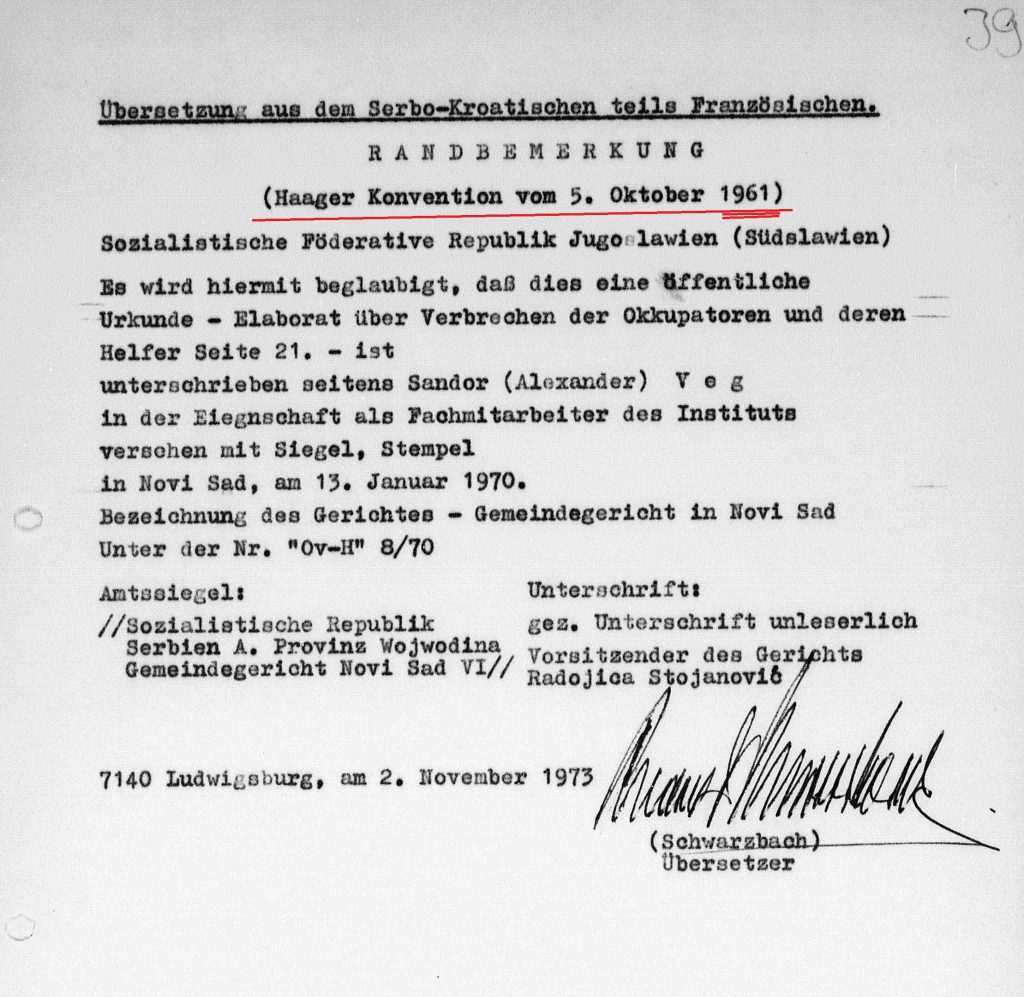
So the gist of what happened on April 11, 1941, morally wrong, but legally completely in order!
New book about Fritz Witt
Since a few days back is the new book about SS-Brigfhr Fritz Witt out on the market. As it´s written by peter Mooney and MArtin Stiles I am sure that it won´t dissapoint you as a reader. We have contributed with small parts to this book, and it´s always nice to see the end product.
You can order the book on LAH Publishings website , which you find here – https://lahpublishing.com/products/fritz-witt-decisions-and-fate
Below we show some content of the book. Enjoy!
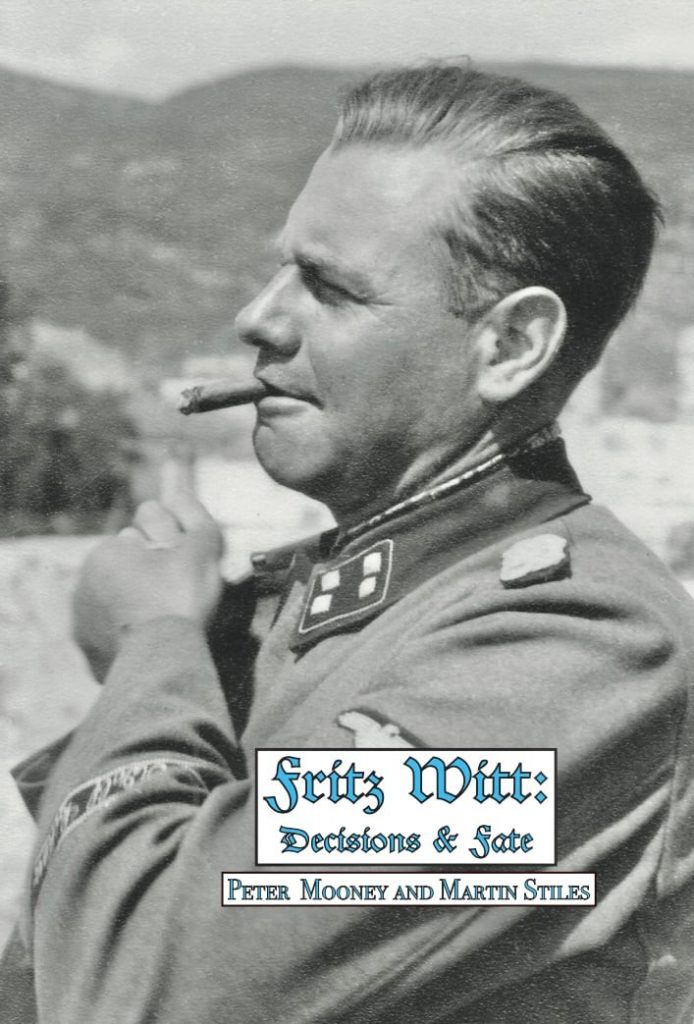
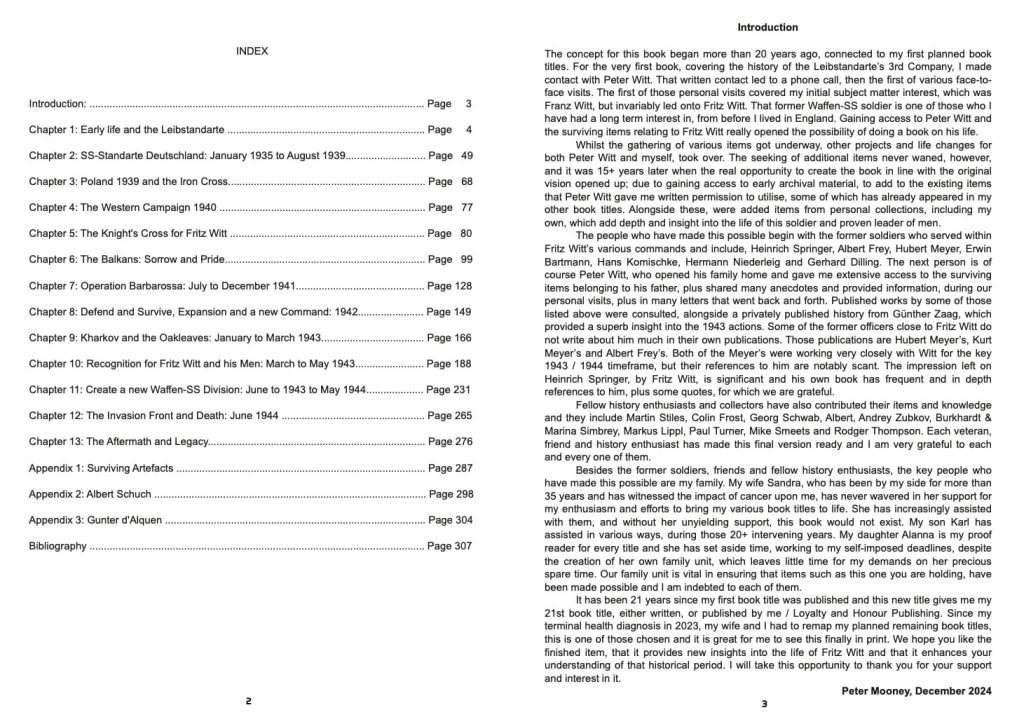
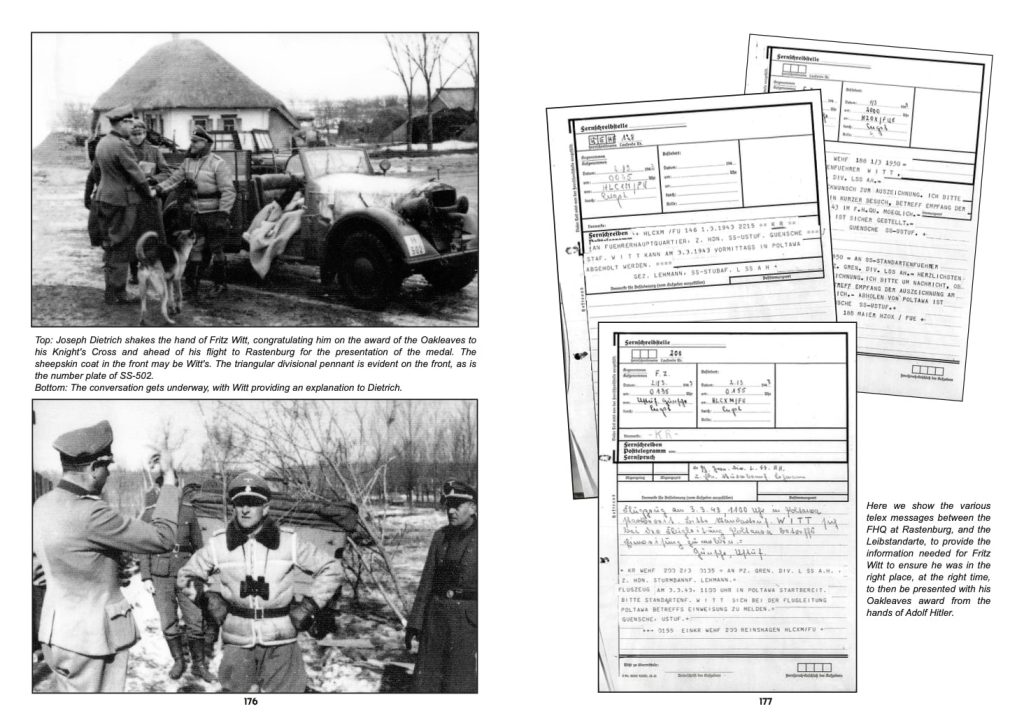
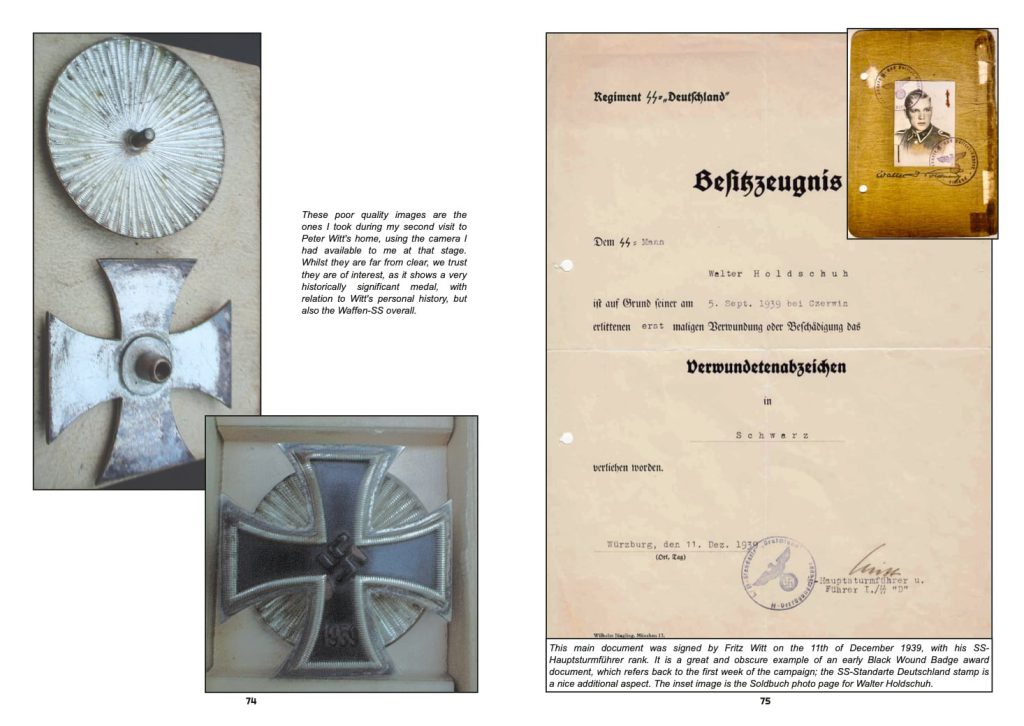
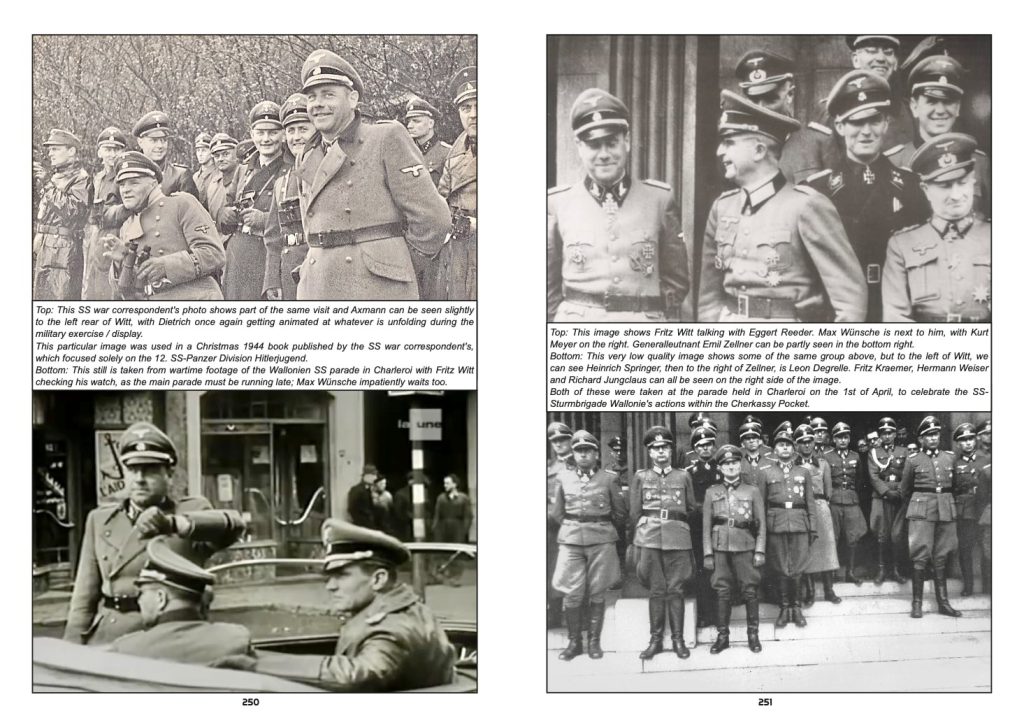
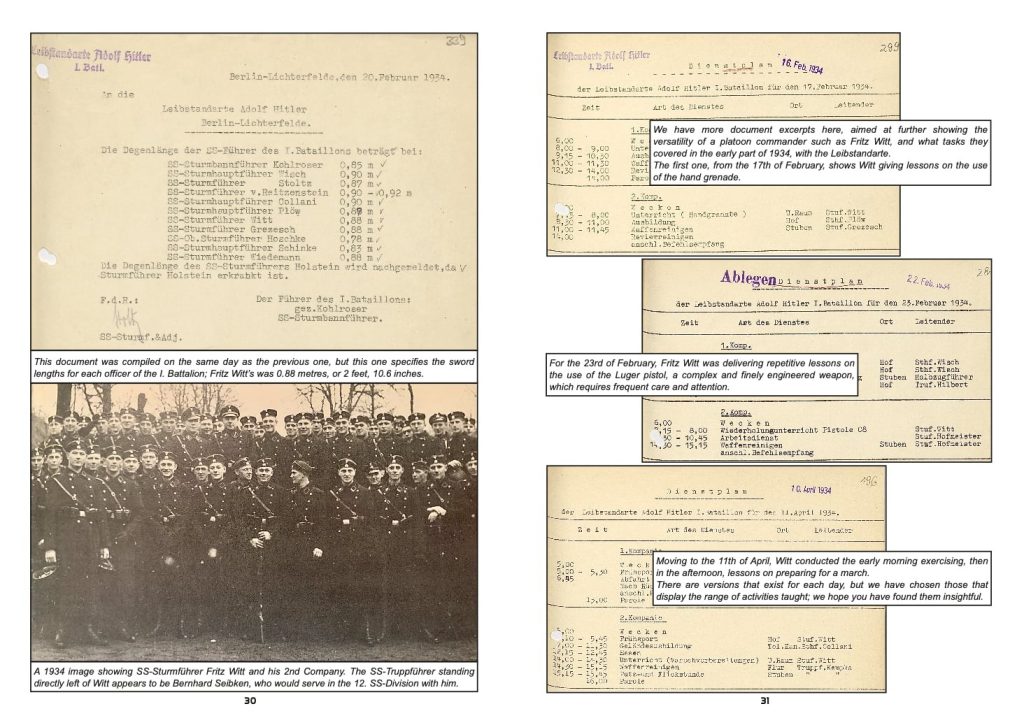
SS-Strm Fritz Christen
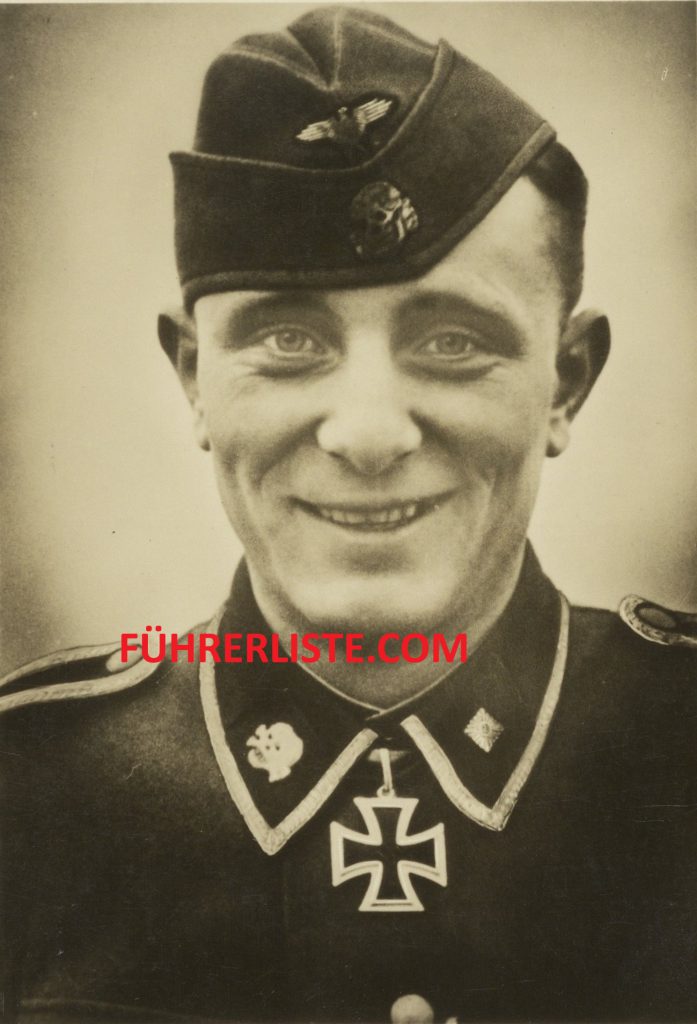
Fritz Christen was the first private of the Waffen-SS to recieve the Knight Cross of the Iron Cross, he was awarded it in late 1941 after an heroic battle near Lushno, which was part of the Demjansk Kessel.
His batallion commander Georg Bochmann wrote the following in the recommendation for the award :
On September 24th, 1941 at around 12:00 noon, SS Sturmmann Christen, a gunner, used his 5 cm anti-tank gun to thwart an attempted breakthrough by 12-15 enemy tanks near Lushno from the firing position on the northern edge of Dubrowka, destroying 6 of the attacking tanks alone.
The firefight was carried out under heavy enemy artillery fire and heavy rifle and machine gun fire from close range. When around 10 enemy tanks attempted to repeat this breakthrough attempt at dawn on September 25th, 1941, gunner Christen again destroyed 7 of the attackers, so that the enemy infantry attack that was taking place at the same time also failed. In this battle, gunner Christen also fulfilled his duty in the gun position that was heavily under enemy fire until the breakthrough attempt collapsed.
In addition to his soldierly skills, SS-Strm. Christen demonstrated the highest fighting qualities and the will to destroy the enemy wherever he appeared through his cool-blooded and exemplary bravery.
SS-Strm Christen was awarded the EK II on 20.7.41 and the EK I on 24.9.41 for his brave service in the Eastern campaign. I request that SS-Strm Christen be awarded the Knight’s Cross of the Iron Cross.
The award was also approved by SS-Ogruf Theodor Eicke, General der Artillerie Hansen, Generaloberst Busch, Generalfeldmarschall von Leeb and finally Generalfeldmarschall von Brauschitz
About Fritz Christen as person we can tell the following, he was born on 29.6.1921 in Wredenhagen, his confession was “Gottglaubig”. His father was Wilhelm Christen, who was a forest worker and his mother was Martha Christen (born Holz). He was a member og the Hitlerjugen from 1932 to 1940, in may 1940 he volunteered for the Waffen-SS and was first sent to the SS-Pz.Jg.Ers.Abt. in Arolsen, but in september 1940 was he transfered to the SS-Pz.Jg.Abt. in the SS-Totenkopf Division. He was a member of the NSDAP since 1940, unfortuantely is the number unknown.
Fritz Christen survived the war and died on September 23, 1995 in Neusorg

